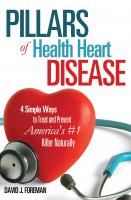This blog post is an excerpt from my book on Heart Disease. This does not have any of the solutions to high blood pressure but is designed to explain what it is and why it can be so devastating if not treated properly. I firmly believe that in order to treat or prevent any disease, we need to have a firm understanding of the underlying issues that can present themselves and then form a plan of action to achieve the health we seek.
Having high blood pressure is defined by having either a systolic reading of 140mm of mercury or higher and/or a diastolic pressure of 90mm of mercury or higher. I know that I just did something I said I wouldn’t do-get scientific on you-but it was needed here. These two readings are measurements of pressure (millimeters of Mercury). The first number,-systolic,-is the measure of pressure pushing against your arteries the second your heart beats. The second number-diastolic-is the measure of pressure pushing against your arteries when your heart is resting (between beats). Typically more attention is given to the top number (systolic) as a major risk factor for cardiovascular disease for people over 50 years old. In most people, systolic blood pressure rises steadily with age due to increasing stiffness of large arteries, long-term build-up of plaque, and increased incidence of cardiac and vascular disease.
Your blood vessels are designed to transport blood throughout your body. If there is too much pressure in them either over time or in an instant, harm will follow to your body. An analogy would be comparing a river in the dry season verses the rainy season. Along the Mississippi river, there are areas where they have built levees to keep back floodwaters. During normal river flows, the levee faces little pressure, but during the rainy season, the amount of water during flood stage pushes hard against the levee wall. If the pressure becomes too great, the levee degrades and even breaks. This is the same thing that can and will happen in your body during periods of elevated pressure. This elevated pressure can and will most likely lead to other more serious and even life threatening conditions.
There is also a condition called pre-hypertension. This condition impacts 10’s of millions of Americans and is described as: Systolic between 120-139 and a diastolic reading between 80-89. If you fall into this category, you are not necessarily considered in the same category as above, but you do have an increased chance of developing cardiovascular disease.
I find it ironic that high blood pressure is not just a risk factor for cardiovascular disease, but it is also a form of cardiovascular disease. This may sound confusing, but simply put, some forms of cardiovascular disease will lead to other more serious forms of the disease-high blood pressure being one of them. I will go more in-depth on high blood pressure later in the book.
Arteries are made of muscle and a semi-flexible tissue that stretches like the elastic does in your clothing. Pressure placed on the arteries causes them to stretch to allow the blood to move through more easily. If the pressure remains high over an extended period of time, the blood vessel walls will become stretched more than the healthy range. Being overstretched may cause following problems:
Scarring
Just like with a rubber band, if it becomes overstretched, there may be tears that occur. These tears end up causing scarring. The scarring will then lead to a buildup of plaque, cholesterol or even blood cells in that particular area of your blood vessel. This buildup can lead to a blockage and perhaps a stroke or heart attack.
Weaknesses
The weakness makes your blood vessels more likely to burst. Health challenges like strokes and aneurysms fall into this category.
Organ and Tissue Damage
By developing a blockage, your organs and other tissue will not receive the proper amounts of nutrients and oxygen. This depletion will end up causing damage to the areas beyond the blockage.
Blood clots
Trapped blood can form clots that will either block or slow down blood flow in the arteries. When these clots break off or block an artery, you will often have a heart attack or stroke.
Plaque build-up
The buildup of plaque in your blood vessels will contribute to the same or similar issue above. When you end up with plaque in your arteries, this will also increase the pressure required to move the blood through your cardiovascular system. This not only puts more pressure on your veins and arteries, but also puts more strain on your heart.
Symptoms of Hypertension
Hypertension is often called the silent killer. The reason for this is that the person doesn’t realize or feel any different yet the elevated pressure can lead to death. There really aren’t any symptoms unless you are in a more severe state of hypertension. The symptoms of this are: severe headaches, nosebleeds, severe anxiety and shortness of breath.
Having hypertension can lead to one or more of these health challenges:
- Stroke
- Memory Loss
- Heart Attack
- Chest Pain
- Fluid buildup in the lungs
- Loss of consciousness
- Kidney Damage
- Eye Damage
It is for these reasons that I suggest that you periodically get your blood pressure checked. Often times you can walk into a pharmacy or a fire station and get your blood pressure checked for free.


